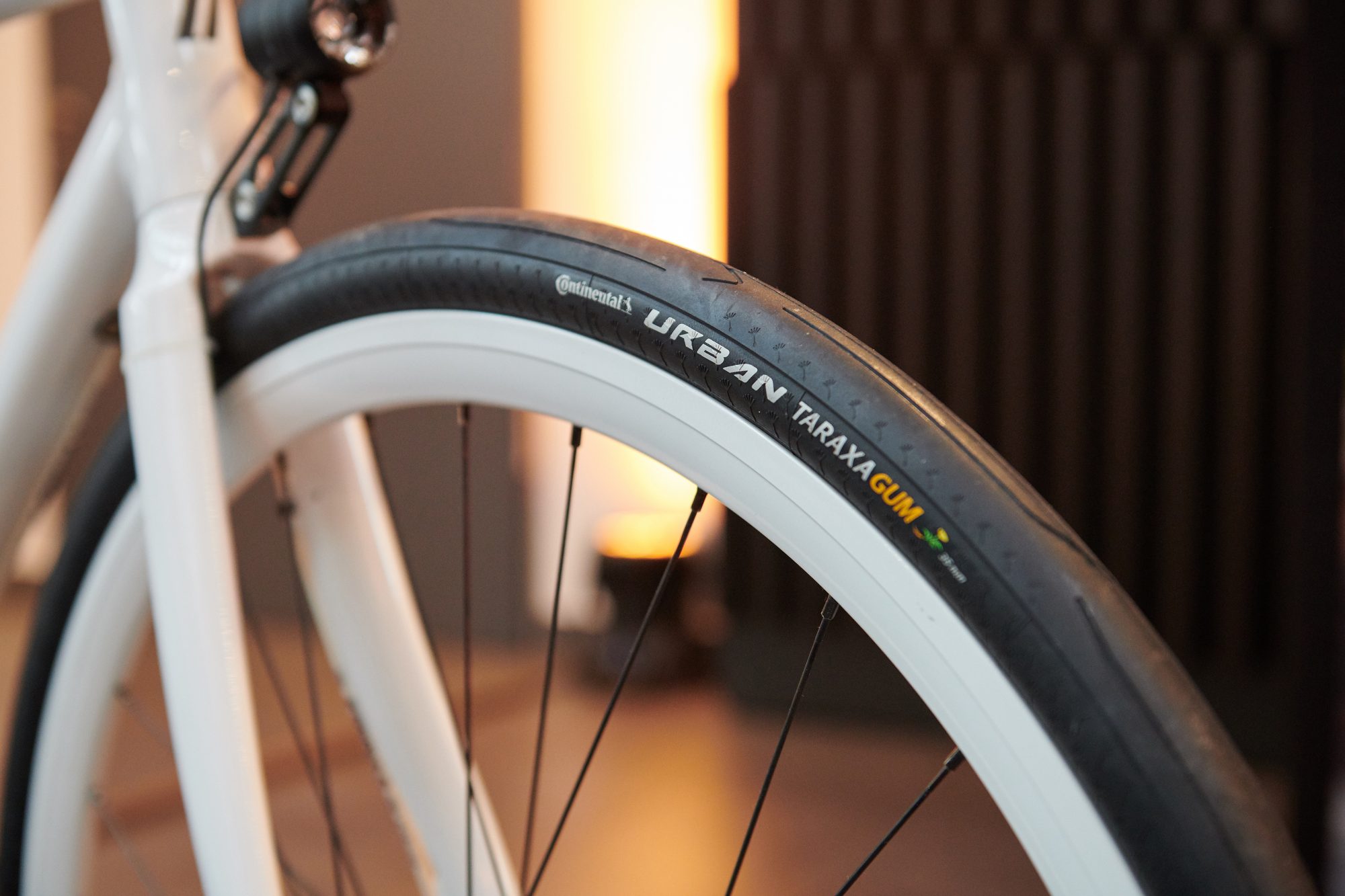Continental launches bike tyre made from sustainable dandelion rubber
German tyre giant says first bicycle tyre made with sustainable rubber from dandelions will be in production in time for the Tour de France


Continental is to use its partnership with this year’s Tour de France as a platform to boost awareness of sustainability, unveiling its first ever series of bicycle tyre made from dandelion rubber.
The Urban Taraxagum is an all-rounder tyre in a 700x35c size which Continental will start to produce in limited numbers at its Korbach factory, where its premium tyres including the Grand Prix 5000 and the Competition are made, in “a couple of days” according to Christian Kötz, head of the tyre division.
The dandelion rubber comes from Anklam, on the German Baltic coast, where Continental opened a research laboratory in December last year. Here, Conti is carrying out further tests on the cultivation and processing of dandelions – specifically the Russian dandelion or Taraxacum koksaghyz – as an alternative source of rubber to the tropical rubber tree.

Even though natural rubber is a renewable product, global demand for rubber is constantly rising. In addition, the rubber tree only grows in latitudes between roughly 30° north and 30° south in Asia, Africa and South America – close to the equator in an area known as the rubber belt. And a rubber tree takes around seven years before it starts to supply latex suitable for processing. Continental says that at this point, the inherent slow pace of the system encounters the high speed of the market, leaving it facing highly volatile prices, monocultures in the producing countries and long transport distances before the rubber reaches Conti’s factories.
By contrast latex is available from a dandelion’s roots just six months into the plant’s life with no genetic engineering necessary. And as everybody with a lawn knows, dandelions are not fussy about where they grow and are relatively undemanding when it comes to climate or type of soil, which means Conti will be able to grow its own dandelion crops on wastelands close to its production sites worldwide.
Continental says it has been able to replicate the characteristics of natural rubber – characteristics which can’t be achieved using synthetic materials – and that good progress is being made with latex yield, although it will be some time before it reaches the kind of volume it needs for large-scale production of two and four-wheeled vehicle tyres.
One hectare of dandelions yields one ton of natural rubber, which is comparable to the rubber tree, but Kötz admitted that last year’s yield from the Anklam crop was not as high as expected due to a drier-than-usual summer, emphasising the importance of establishing the worldwide sites as soon as possible so as not to be dependent on a single region.
Rubber makes up 10-30 per cent of a tyre, leaving the rest to be built with the usual parts of the structure, so for example the Urban Taraxagum has an integrated Vectran breaker like other Conti tyres. “The Urban Taraxagum is,” according to Thomas Falke, head of two-wheel business at Continental, “a comfortable sports tyre that breaks with existing conventions in tyre production. We were already the only manufacturer of bicycle tyres that are handmade in Germany and with this new compound we are going one step further in our German activities with this Taraxagum rubber that was harvested in Anklam.”
Although Continental’s six sponsored WorldTour teams will be riding Continental Competition Pro LTD tubulars in 2019 within a couple of years they could be on dandelion-derived tyres, as could the rest of us, both on our bikes and in our cars.
How dandelion rubber was developed
Continental worked with the Fraunhofer Institute for Molecular Biology and Applied Ecology (IME) to produce rubber from Russian dandelions – the particular species that IME identified as best for the job. The idea of producing rubber from dandelions has been around since the early 20th century, but the various attempts and projects either failed to yield enough latex or the raw material – from wild dandelions – was not of high enough quality. So IME helped Continental to both cultivate the right type of dandelion and to develop the industrial process of extracting the latex from the root. According to Continental, the natural rubber from dandelion roots is every bit as good as its conventional counterpart. “Dandelion rubber is chemically identical to the product of the rubber tree,” said Dr. Andreas Topp, head of materials and process development in research and development.
Our verdict
We applaud Conti’s efforts to make its tyre production more sustainable – and no doubt it makes economic sense for the German brand to grow its own rubber too. Michelin has its Power Competition, Continental already has its Competition, so when the time comes for a dandelion racing tyre we expect it to be called the Flower Power Competition.

Thank you for reading 20 articles this month* Join now for unlimited access
Enjoy your first month for just £1 / $1 / €1
*Read 5 free articles per month without a subscription

Join now for unlimited access
Try first month for just £1 / $1 / €1
Get The Leadout Newsletter
The latest race content, interviews, features, reviews and expert buying guides, direct to your inbox!
Simon Smythe is a hugely experienced cycling tech writer, who has been writing for Cycling Weekly since 2003. Until recently he was our senior tech writer. In his cycling career Simon has mostly focused on time trialling with a national medal, a few open wins and his club's 30-mile record in his palmares. These days he spends most of his time testing road bikes, or on a tandem doing the school run with his younger son.
-
 Save £42 on the same tyres that Mathieu Van de Poel won Paris-Roubaix on, this Easter weekend
Save £42 on the same tyres that Mathieu Van de Poel won Paris-Roubaix on, this Easter weekendDeals Its rare that Pirelli P-Zero Race TLR RS can be found on sale, and certainly not with a whopping 25% discount, grab a pair this weekend before they go...
By Matt Ischt-Barnard
-
 "Like a second skin” - the WYN Republic CdA triathlon suit reviewed
"Like a second skin” - the WYN Republic CdA triathlon suit reviewed$700 is a substantial investment in a Tri Suit, and it is, but you’ll definitely feel fast in it
By Kristin Jenny